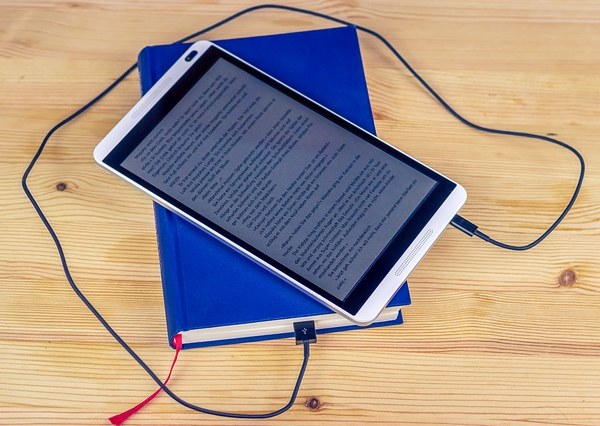1.
In 2009, the Book Industry Environmental Council set a couple of environmental goals for the U.S. book industry. Using a calculation of the industry’s total greenhouse gas emissions from 2006 as its baseline, the BIEC and its members pledged to reduce the industry’s carbon footprint by 20% in 2020 and by 80% in 2050. When the pledge was made, the Kindle had existed for only a year and a half, and the Nook was still eight months away. (Kobo eReaders and iPads didn’t emerge until 2010.) eBooks, still in their infancy, accounted for a measly 5% of books sold in America.
Today, it seems like many publishing houses are on their ways toward achieving the BIEC goals. Thanks to the proliferation of FTP software, most major publishing houses have slashed the amount of printing done in-office. At John Wiley & Sons, my production group had a paperless workflow: Adobe was our editing tool of choice, and to be one of our freelancers, you had to pass an exhaustive MS Word screening test. Later on, at Oxford University Press, a common email signature asked readers to “save paper and print only what’s necessary.” Organizing stacks of paper on your desk was out; navigating sub-folders on a shared drive was in.
Meanwhile eBooks were becoming ever more popular. By the end of 2011, Amazon announced it was selling one million Kindles a week, and Apple said it had sold over 40 million iPads. Consequently, eBooks accounted for 31% of U.S. book sales by 2012. According to a Pew Internet study, as many as one in four American adults now own an eReader or tablet (one in three if they went to college). The trend toward digitization is undeniable, and there are many reasons to be optimistic: big publishers are making more money off of more products than ever before; it’s easier than ever to publish a book; and the number of books available to anyone with an internet connection is unprecedented. Some analysts even predict that soon print books, like CDs a few years ago, will be almost entirely replaced by digital files.
But is all of this really cutting the industry’s carbon footprint? Is total eBook adoption — that is: elimination of the print book — really an ecologically responsible goal?
2.
Put in absolute terms, the number of books — regardless of format — produced and sold across the globe increases each year. This is mostly due to an increasing global population. While America, Australia, India and the UK are the most rapid adopters of digital reading devices — at least for the time being — eBooks presently account for only a small fraction of the world book market. (This is due to factors such as availability of technology, reliable internet connections, and disposable income.)
Necessarily, the increased consumption of print and digital books has led to an ever-increasing demand for the materials required to create, transport, and store them. In the case of eBooks, though, vast amounts of materials are also necessary for the eReaders themselves, and this is something typically overlooked by proponents of digitization: the material costs are either ignored, or, more misleadingly, they’re classified as the byproduct of the tech industry instead of the book industry.
National Geographic correspondent Allen Tellis recently posted a brief note of encouragement to owners of eReaders, and it illustrates exactly the type of oversight I just mentioned. “The steady rise of eBooks,” Tellis wrote, “should benefit the environment by reducing use of paper and ink, and by …….
Source: https://themillions.com/2012/05/are-ereaders-really-green.html
